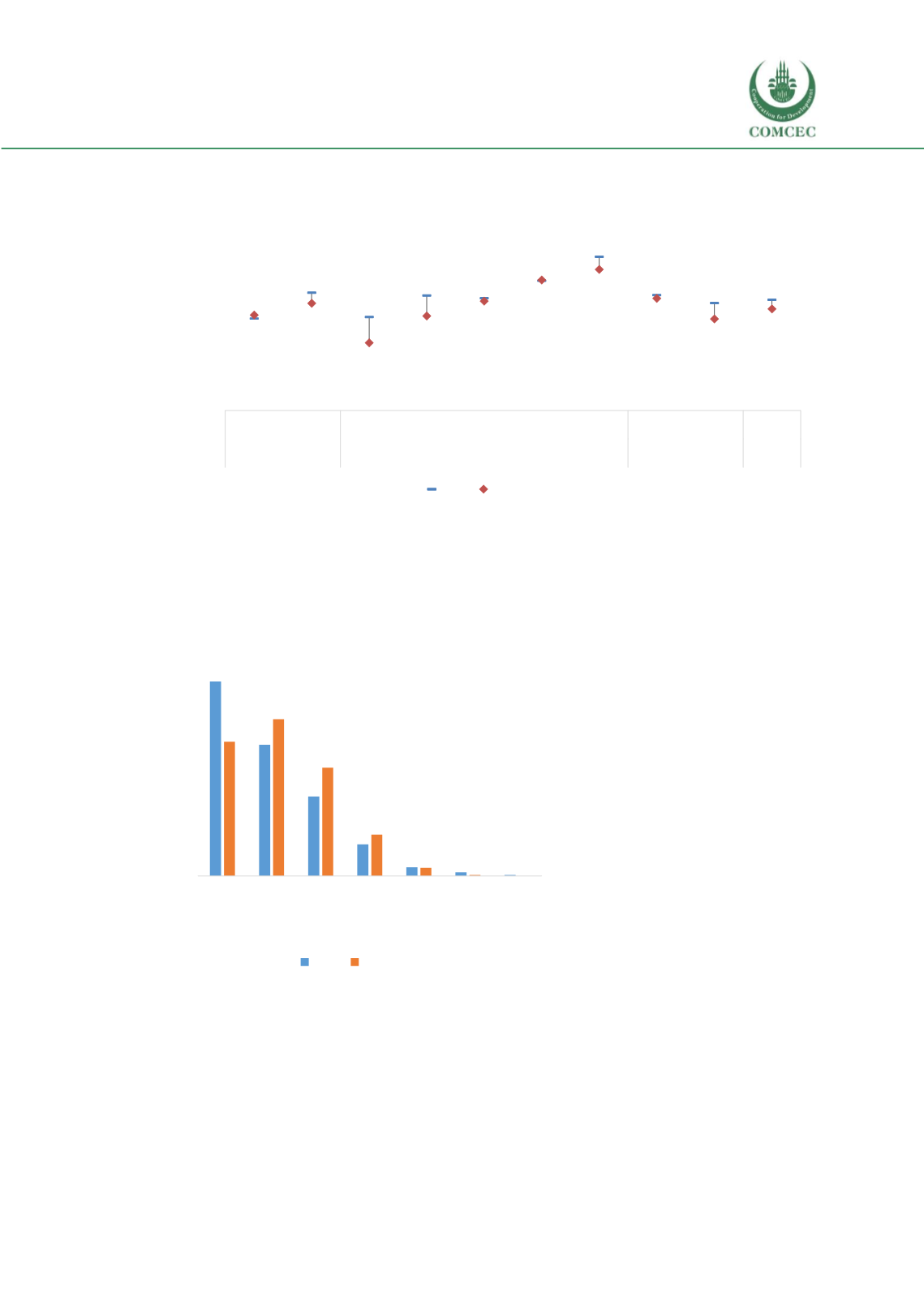

Education of Disadvantaged Children in OIC:
The Key to Escape from Poverty
135
Figure 51 Learning achievement in mathematics, passing the basic achievement threshold
(level 1) (TIMSS 1999-2011)
Source: UNESCO WIDE Database
The worsening performance of
boys could be due to several
factors
including
higher
pressures for child labour (and
as
such,
probably
higher
absenteeism
rates),
higher
incidences of violence in boys’
schools (male teachers teach in
boys
schools),
lowered
expectations of return to
investment in schooling due to
the generally low quality of
schools and/or mismatched
curricula to necessary job
market skills, low capacity of
boys schools versus girls’
schools in motivating and
generating
interest
in
mathematics. In addition, boys’
schools may suffer from higher
disciplinary issues than girls’ schools. It is worth noting that this gender gap in mathematics is
reversed from the general global trends, where boys tend to outperform girls. As such, it requires
special attention to correct it and ensure the trends get further exacerbated in the future.
Other data sources point to the gender gap in achievement between girls and boys. According to
MoE statistics, girls outperformed boys on the Al Tawjehe exam in almost all streams for the years
0
10
20
30
40
50
60
70
80
90
100
Rural
Urban Quint 1 Quint 2 Quint 3 Quint 4 Quint 5 Female Male Total
Location
Asset quintiles
Gender
Total
% of children passing the basic
achievment threshold (Level1)
1999 2011
Figure 52 Percentage of Jordanian students at each
combine math proficiency level in PISA 2012 by gender
Source: Akour (et al) (2015)
0
5
10
15
20
25
30
35
40
45
50
<Level 1 Level 1 Level 2 Level 3 Level 4 Level 5 Level 6
% of students
Proficiency levels
Boys Girls
















